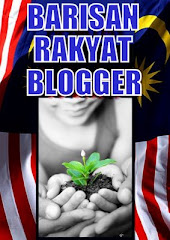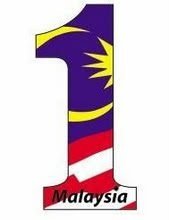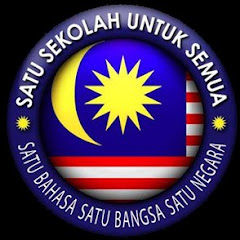editor@thenutgraph.com
SOME years ago, while studying in the United Kingdom, one of The Nut Graph's team members had a discussion with a classmate from India about a fellow Indian Malaysian student.
TNG journalist: Ya, she celebrates Diwali, too. She's a Hindu Indian.
Indian classmate: Huh? She's not Indian, she's Malaysian!
Journalist: Yes, she's Malaysian, but she's also Indian.
Classmate: Oh, she has two passports —
one from Malaysia and one from India?
one from Malaysia and one from India?
Journalist: No, no, nothing like that. She's ethnically
Indian but her nationality is Malaysian.
Indian but her nationality is Malaysian.
Classmate: But that doesn't make any sense. "Indian" is a
nationality. Like me — I'm Indian. How can she be
Indian when she's Malaysian?
nationality. Like me — I'm Indian. How can she be
Indian when she's Malaysian?
How, indeed?

(Pic by John Tomaselli / sxc.hu)
For in India, there is no Indian ethnicity, only Indian nationality. There are ethnic groups such as Tamil, Telugu, Malayalee, Sindhi and so on, each with its own distinct language, culture and history. Indian Malaysians still identify with their respective ethnic groupings till today. So, there are Tamils, Telugus, Malayalees and Sindhis, but no such thing as Indians, except if one is referring to an Indian national. Some Ceylonese Tamils don't consider themselves Indians, and prefer to be known as "lain-lain".
Similarly, in China, there are ethnic Han Chinese, consisting of dialect groups such as the Hokkien, Hainanese, Cantonese and Foo Chows. But the Han are only one of over 50 ethnic groups in China. So most Chinese Malaysians should strictly speaking be called ethnic Han, not Chinese, unless one was referring to citizens of China.
As for Malay Malaysians, one need only study the following table to note the British's haphazard and completely arbitrary attempts at classifying diverse groups under the heading "Malay":
| 1871 | 1891 | 1911 Straits Settlements (SS) | 1911 Federated Malay States (FMS) | 1931 |
| Europeans and Americans (plus 18 sub- categories) | Europeans and Americans (plus 19 sub- categories) | Europeans (plus 31 sub- categories and Americans) | Europeans (plus 17 sub- categories) | Europeans (plus 24 sub- categories) |
| Malay races: BoyaneseBugis Dyaks Javanese Jawipekans Malays Manilamen | Malay races: Aboriginies Achinese Boyanese Bugis Dyaks Javanese Jawipekans Malays Manilamen | Malay and other allied races: Achinese Amboinese Balinese Bandong Bahjarese Bantamese Batak Borneo Boyanese Bugis Bundu Dyaks Dusuns Javanese Jawipekans Kadayans Korinchi Malays Rawanese Sulu Sundanese Tutong | Malay races: Malay Javanese Sakais Banjarese Boyanese Mendeling Kerinchi Jambi Achinese Bugis | Malay races: Malays Javanese Boyanese Achinese Bataks Minangkabaus Korinchis Jambis Palembang Other Sumatrans Riau-Linggans Banjarese Dutch Borneo Bugis Dayaks Sakais Others Also natives from Dutch East Indies |
| Chinese | Chinese races: Cantonese Hokkiens HylamsKhehsNanyangs Teo-Chews | Chinese: Straits-born China-born | Chinese tribes: CantoneseKhehTie Chiu Kheh Hokkien Hiu Hua Hok ChiuTie Chiu Hailam Kwong Sai | Chinese tribes: Hokkien Tiu Chiu Hakka (Kheh) Hok Chia Cantonese Hailam Hok Chiu Kwongsai |
| Hindus Bengalees and other Indian races not specified | Tamils and other Indian races: Bengalees Burmese Parsees | Indians: India-born Straits-born Born elsewhere | Indians by race: Tamil Telugu Punjabi Bengali Malayali Hindustani Afghan Gujerati Maharatta Burmese | Indians by race: Tamils Telegu Malayalam Punjabi United Provinces Burmese Bengal Bombay Bihar Nepal |
Source: Charles Hirshman, The Meaning and Measurement of Ethnicity in Malaysia, Journal of Asian Studies, 1987,
as referred to in The Lost Tribes of Malaysia: The construction of race politics from the colonial era to the present,
by Dr Farish Noor
as referred to in The Lost Tribes of Malaysia: The construction of race politics from the colonial era to the present,
by Dr Farish Noor
Multiracial coalition Putera-AMCJA proposed in 1947 that we all be called Melayu, regardless of ethnicity or religion. As documented in Fahmi Reza's 10 Tahun Sebelum Merdeka, eventual MCA founder Tun Tan Cheng Lock also agreed to this after much deliberation with his Malay coalition partners.
Their proposals were rejected by the British, who preferred to negotiate with Umno. Britain was intent on establishing the Federation of Malaya, which would maintain British power. By the time Malaya was given independence in 1957, the ethnic constructs of Malay, Chinese and Indian were cemented in place.
Fifty-two years later, we're still stuck with these definitions and still arguing about whether we're Malaysian first, Malay first, or some other racial categorisation. And for those who don't fit into "Melayu, Cina atau India", we call them "dan lain-lain" or the nifty acronym "DLL". And since these DLL don't fit neatly into any one category, some of us go so far as to ask, "Actually, what are you, ah?"
This constant need to define "what are you" in relation to "what I am" has polarised our nation and created an "us" versus "them" mentality among Malaysians. By seeing our fellow Malaysians only as "Malay" or "Chinese" or "Indian", we propagate the old colonial constructs that make it easier to provoke discontent towards the "other", who are not like "us".
But are "we" really so alike, and are "they" really so different? Is it always easier to identify with those from our own race? Especially when our so-called races were artificially created in the first place?

Amartya Sen (Pic by Elke Wetzig / Wiki
commons)
As economist and philosopher Amartya Sen points out in his book Identity and Violence, classifying people with a single identity ignores the other identities they may have and value. These include, for example, "class, gender, profession, language, science, morals and politics".
Is it time we stopped harping on our respective races and developed a broader view of our fellow Malaysians? Is that possible if the Barisan Nasional government continues to practise race-based politics and play up racial rhetoric? How do you see yourselves as Malaysians? Tell us in six words only. Here are some of the newsroom's thoughts:
Ding Jo-Ann
What's wrong with being Malaysian first?
Don't want to be Chinese first.
Don't call me banana, I'm Malaysian.
"Us" and "them" isn't so straightforward.
Koh Lay Chin:
Only "Malaysians" when we are overseas?
At home I am a category.
Race = My sprint to KFC
 Jacqueline Ann Surin:
Jacqueline Ann Surin:Who defines what a "Malaysian" is?
"Dan lain-lain" = "Others". "Malaysian" better.
Melayu, Cina, India. Dicipta oleh British.
Melayu, Cina, India. Disokong oleh BN.
Race is a colonial construct, duh!
Imagine, even after independence, still colonised.
Why does BN racialise citizens' identity?
Shanon Shah:
Prioritising multiple identities: stupid. I'm everything.
In old hikayat, Malays more accommodating.
Confusing citizenship with race. False dilemma?
Curious first. Critical second. Malay? Maybe.
This land was cosmopolitan. What happened?
Malaysian despite Muhyiddin and Kit Siang.
The Nut Graph believes in diversity.
Inspired by Ernest Hemingway's genius, the Six Words On... section challenges readers to give us their comments about a current issue, contemporary personality or significant event in just six words. The idea is to get readers engaged in an issue, while having fun and being creatively disciplined. Courtesy of Nut Graph




No comments:
Post a Comment